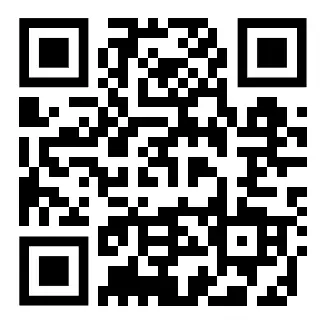Researchers
Global Media Intelligence for Academic, Policy, and Market Research Press Monitor equips researchers around the world with structured, multilingual, and real-time insights drawn from digital and social sources. With AI-powered summaries, global language coverage, and export-ready data formats, researchers can unlock narratives across platforms and geographies with speed and accuracy.

Who Is It For?
Ideal Audience
Key Challenges Solved
Global Research Demands Global Data
The boundaries of research no longer end with journals or institutional databases. From local blog posts to multilingual social discourse, new patterns emerge daily across digital platforms. Press Monitor helps researchers capture and structure these narratives in real-time.
Multilingual Coverage
We monitor content in major international languages including
English, Chinese, Hindi, Spanish, Arabic, French, Bengali, Portuguese, Russian, Indonesian, Urdu, German, Japanese, Turkish, Persian, Korean, Thai, Javanese, and Italian.
Our platform auto-generates precise, language-specific queries and translates content into your preferred language.
Source Coverage Policy
Covers media sources where content is publicly viewable and copyright-compliant.
No print media; only digital content indexed.
Indexed if accessible via sitemaps, RSS feeds, or public pages.
Tracks social media handles of mainstream media, blogs, vlogs, and public AV channels.
Industry Overview
Today’s research requires speed, context, and diversity of sources. A single newspaper archive or legacy database can’t keep pace with the velocity of online and regional discourse. Researchers need structured, real-time data and multilingual insights to inform credible, defensible, and timely outcomes.
Key Trends
Common Research Challenges
Blind Spots in Coverage
Incomplete access to digital content in foreign languages, niche regions, or emerging platforms.
Late Trend Discovery
Reactive response to shifts in public opinion or emerging topics.
Manual Data Structuring
Time-intensive cleaning and organizing of news, interviews, or transcripts.
Weak Presentation Tools
Difficulty converting insights into compelling, credible visualizations.
Citing Unverifiable Sources
Reliance on summaries or screenshots instead of source-linked insights.
Our Solutions
Challenge: Blind Spots in Global Media
- Unified Global Feed
Track online news, blogs, social media, and audiovisual content across 20+ languages. - Niche Media Discovery
Access media outside the traditional radar—think regional online portals, local influencers, and AV clips.
Challenge: Late Trend Discovery
- Emerging Topic Alerts
Get real-time notifications when a theme gains traction in any monitored language. - Trend Velocity Mapping
Monitor topic spread and pickup speed over time and platforms.
Challenge: Manual Structuring
- AI Data Structuring
Convert unstructured content into datasets classified by topic, location, tone, and source. - Executive Summaries
Save hours of reading with auto-generated summaries per entity or theme.
Challenge: Weak Presentation Tools
- Research Dashboards
View data as charts, maps, or timelines filtered by theme, geography, sentiment, or channel. - Export-Ready Reports
Produce PDFs, PowerPoint decks, or JSON datasets tailored to academic or stakeholder needs.
Challenge: Verifiability and Attribution
- Source-Linked Headlines
Every data point includes a link or screenshot of the original article or post. - Archived Content Snapshots
Maintain defensible citations even when the source content changes or disappears.
Services Tailored for Researchers
Multilingual Media Monitoring
Track online and AV content across public sources in 20+ languages.
Real-Time Alerts & Trend Detection
Get notified as soon as a topic starts gaining traction.
Sentiment and Topic Classification
Filter by emotional tone, subject category, geography, or author type.
Automated Structuring & Summarization
Convert news and social chatter into exportable insights.
Visual Dashboards & Reporting
Interactive dashboards or print-ready reports by stakeholder type.
Historical Archives
Backward-looking datasets ideal for citations, time-series analysis, or retrospectives.
Real-World Use Cases
Academic: Mapping Cultural Narratives
A university research team studying environmental policy used Press Monitor to map online reactions in five languages. They created sentiment graphs and heatmaps that became part of a peer-reviewed paper.
Policy: Rapid Response Strategy
A think tank tracking healthcare policy identified regional backlash on social platforms. Visual alerts helped shape timely recommendations that influenced a parliamentary response.
Market: R&D-Driven Product Pivot
A consumer goods company spotted increasing complaints around plastic packaging in Spanish-language YouTube videos. The team accelerated their sustainable packaging rollout by 4 months.
Integrations & Compliance
Tools & Platform Compatibility
Export Formats
Compliance & Governance
Frequently Asked Questions
Do you track academic and public policy content separately?
Yes. You can create multiple content streams and dashboards—by geography, institution, or subject.
Is your coverage limited to English?
Not at all. We support monitoring and translation across 20+ major languages globally.
Can I export structured datasets?
Yes. JSON, CSV, and API access are available, including sentiment, source URL, timestamps, and tags.
Do you include content behind paywalls?
We include it only if the content is publicly indexed in RSS feeds or sitemaps, respecting copyright rules.
Can I use visual data in academic presentations?
Yes. You can export charts, timelines, and maps with source citations and embed them in decks or papers.
Is the service suitable for collaborative research teams?
Yes. Dashboards, alerts, and reports can be shared or exported across research teams and departments.
Getting Started
The research landscape is evolving. Static databases and delayed reporting are no longer enough. With Press Monitor, you gain access to dynamic, multilingual, real-time insights across digital platforms—ready to structure, visualize, and cite.
Research faster. Cite smarter. Publish stronger.
Contact Us
Thank you for your interest. You have multiple options to connect with us.

Use the form to send us a message.